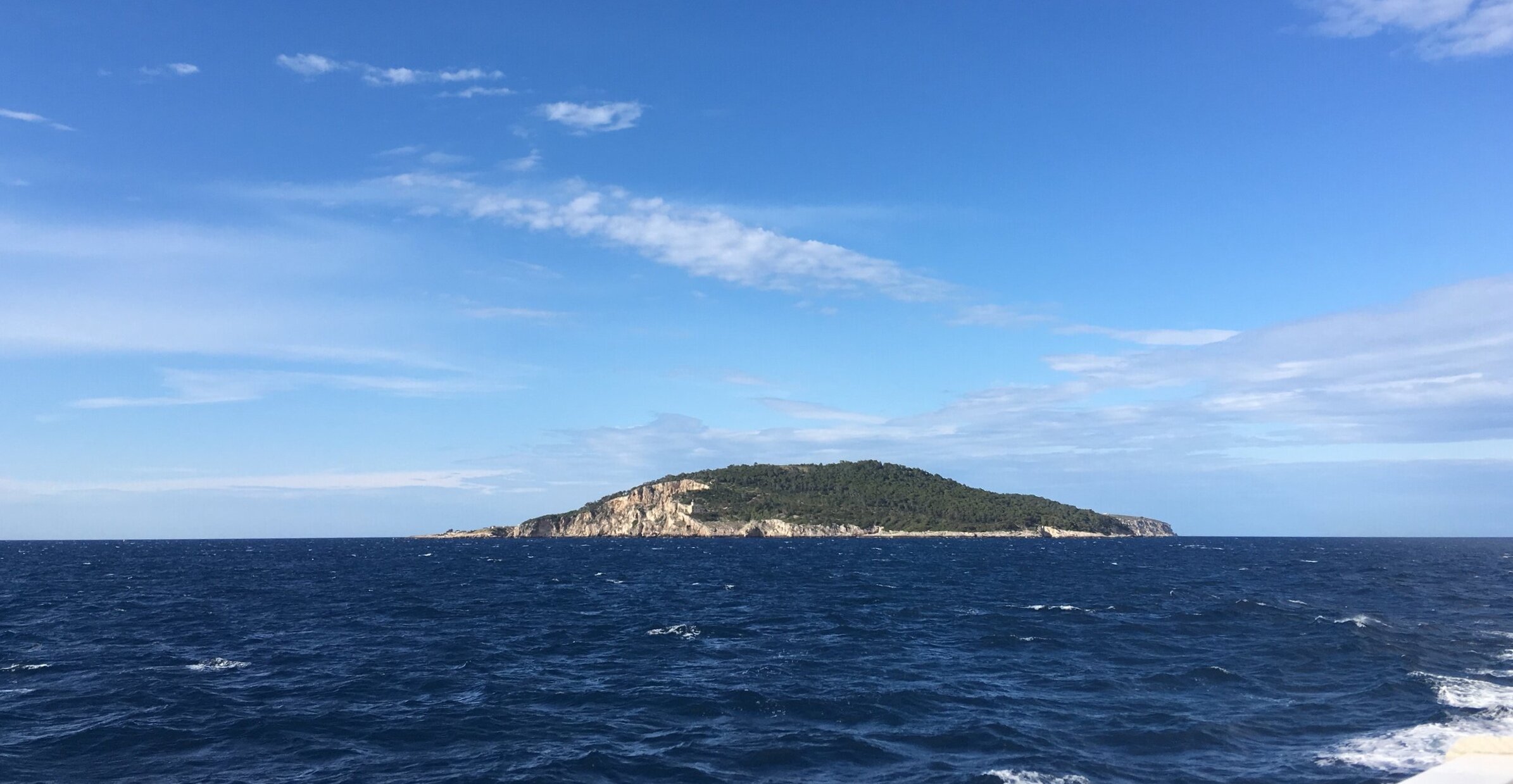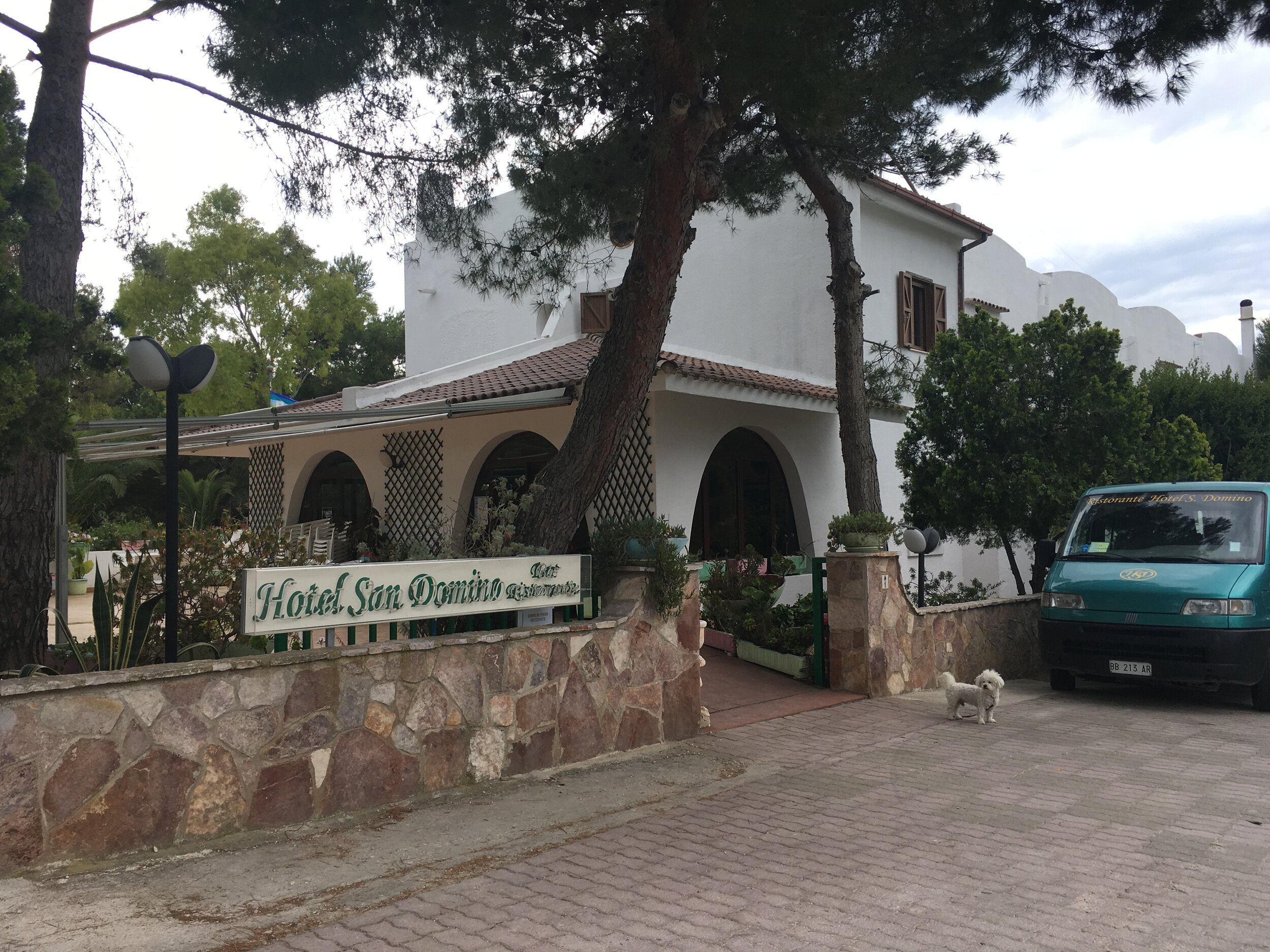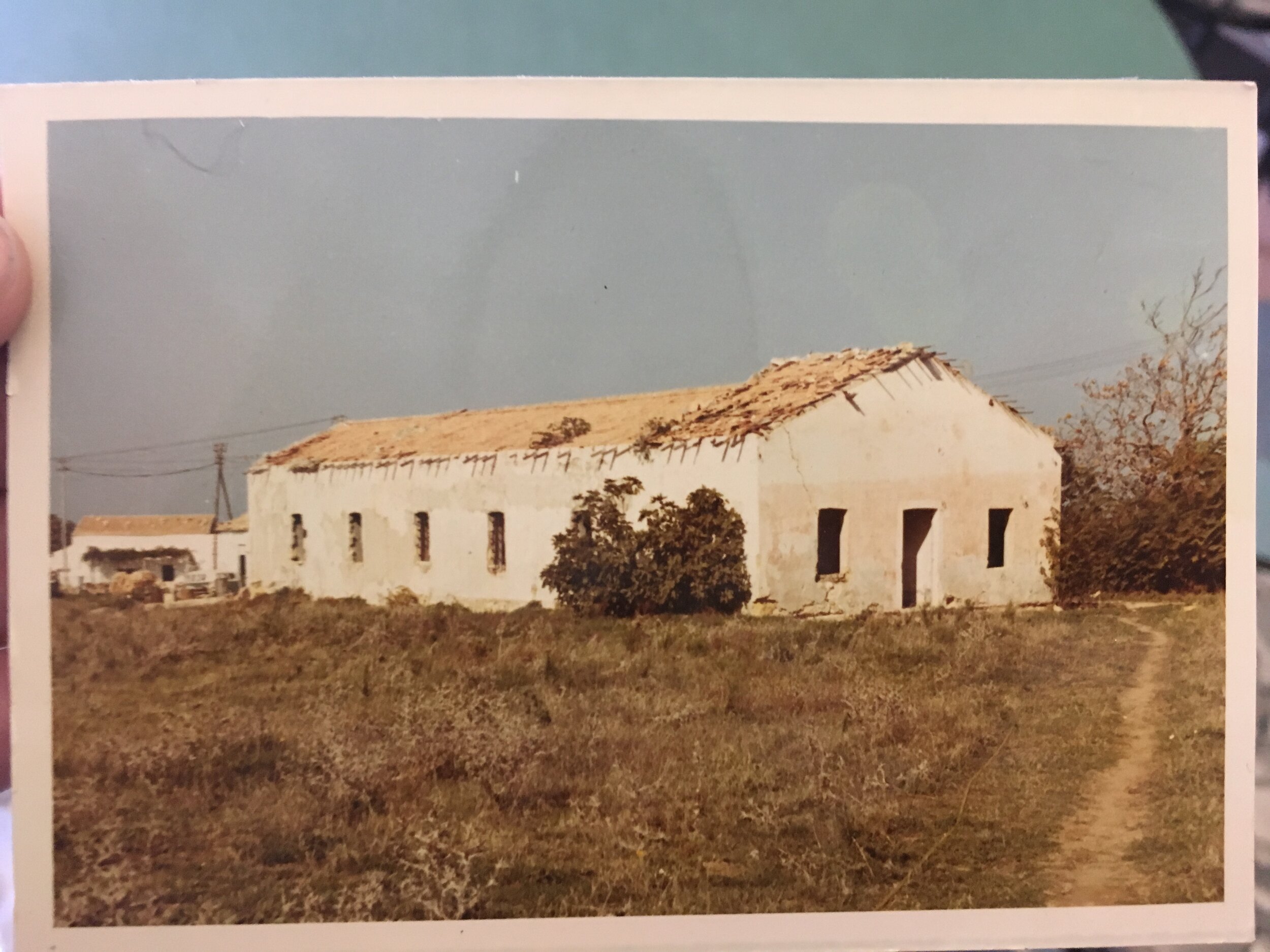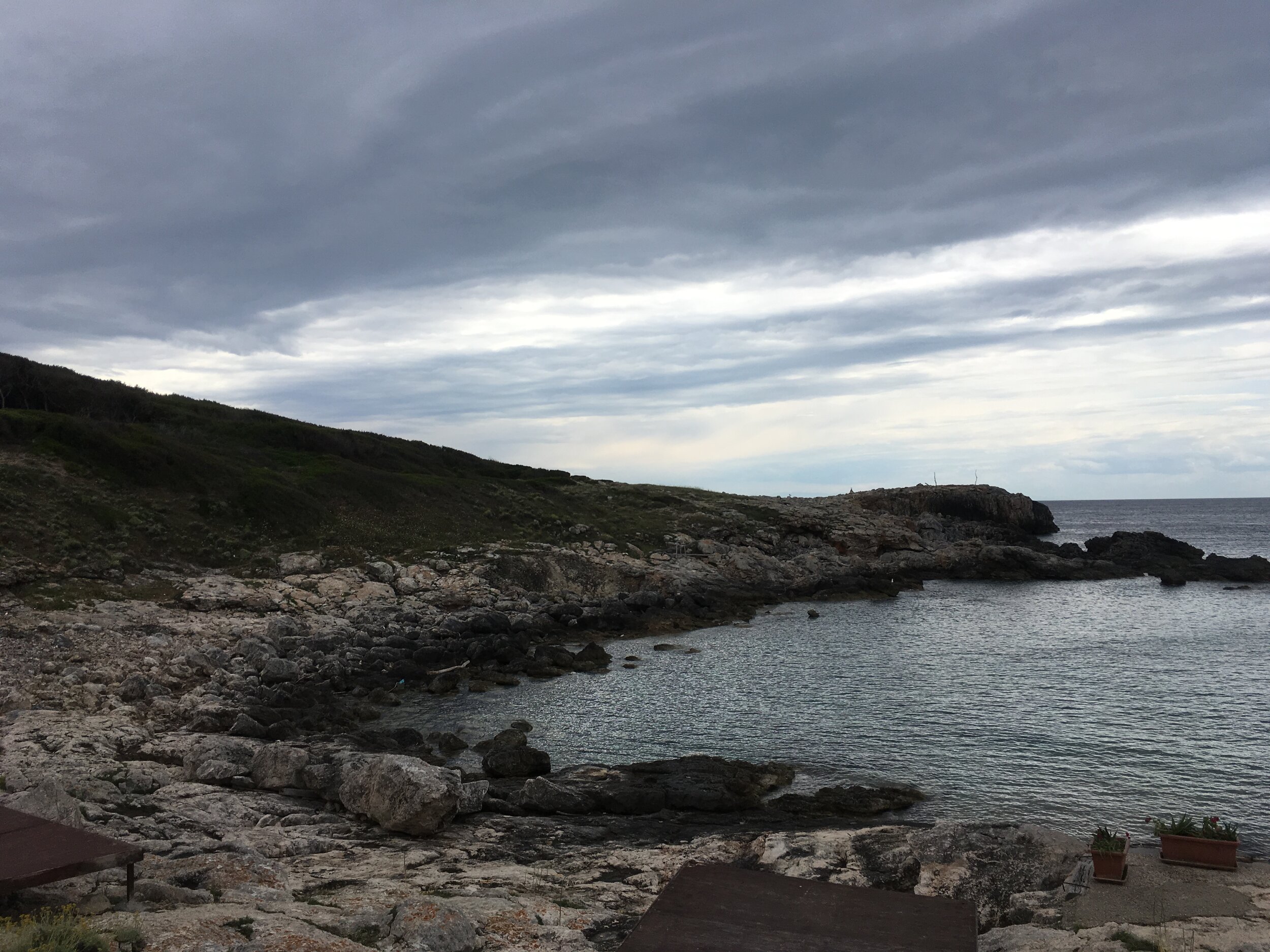San Domino
I visited San Domino - the former prison island where much of Mussolini’s Island is based - relatively late in the writing process. In fact, I already had a publishing contract by the time I made the trip. Many of the notes from my editor had pointed to the fact that, whilst the scenes in Catania were vivid, there was less sense of place in San Domino. I don’t think she knew I had never been, but editors are clever like that - somehow, the difference between the two locations was very clear in the writing of them.
I panicked a little when I worked this out - I had just a few months left to knock the book into shape, and San Domino isn’t the most straight forward of places to get to. But it turned out to be easier than I had expected - with some googling and exploring of Italian train timetables, I had a trip planned within a couple of weeks. It’s not often you have to sheepishly explain to your boss that you need to take a few days off at short notice for an emergency trip to the Adriatic. (Thanks again Nic.)
London - Pescara - Termoli - San Domino
My suggestion, for those wishing to take the scenic route, is a flight to Pescara (a very touristy seaside city which looked like a slightly stressful place to take a holiday!) then a train to Termoli (a beautiful, very tiny seaside town which is worth a visit, though you probably wouldn’t find much to do for more than a few days), then a ferry across to San Domino. There’s an easier option involving a helicopter which I’m told is a much more sensible option, but it didn’t feel particularly authentic for my purposes!
Approaching San Domino from Termoli (May 2016)
It is indescribably weird to see a place you’ve spent several years imagining - I sat on the top deck of a little boat from Termoli taking endless pictures as the tiny blur on the horizon slowly turned into a blob and then the discernible shape of an island, whilst everyone around me looked distinctly uninterested.
(You can read more about how visiting San Domino affected the book on Isabel Costello’s Literary Sofa blog here.)
Locations
The prison
My first goal was to try and track down the buildings in which the men were housed - and locked into at night. My research suggested there were two dormitories, one of which had been converted into a hotel, and the other of which was still intact as well. I wandered around a lot in what I thought was roughly the right area, and found various outbuildings and other constructions which turned out to be false alarms, before eventually identifying them - the Hotel San Domino and a private house.
The Hotel San Domino today, and a photograph I was shown of how it once looked.
The second building today - a private house - and its owner Luigi, who kindly showed me around
‘Francesco had not slept in a room with so many others before. Not even in San Nicola, where the dormitories had been larger. He found he could not shut out the sound of breathing, all around him, some of it slow and shallow, some quicker; quiet crying, or just tiny moments of panic, breaking out across the room in ripples, then quickly dying away.’
-p 42
The pine trees
During my research, I read a quote from a woman who recalled watching the prisoners arrive on San Domino and being marched across the island. I used this image for the character of Elena, and imagined her standing amongst the pine trees that cover much of the island, including on the road from the port to the village.
Following my conversations with Attilio Carducci, who has lived on San Domino since 1927, I’m now slightly unsure about whether these pine forests would have been present on the island in 1939. But they’re present in my book, and so I guess they’re a part of my own imagined San Domino - as close as I could make it to the real thing, but inevitably not quite the same. It’s very easy to let yourself get tied into knots about questions like this (and it’s been a source of crippling anxiety for me many times!) but I think it’s important to remember you can only do your best - you’re writing fiction, after all.
‘She heard the men before she saw them; feet marching on the paved street that took them up the steep climb from the beach. She moved closer to the road, emerging from amongst the trees in time to see them rounding the corner and marching towards her, two carabinieri officers leading them.’
-p 16
The Cala Tramontana
There are lots of coves and grottos on San Domino, some of which are hidden away behind trees, and others, like this one, a wide open expanse. There are various stories (which I was never able to verify) of the arrusi swimming in the sea from the Cala Tramontana, so it features a few times in the novel.
‘From the village, she turned left through the trees to her favourite place on the island, the Cala Tramontana. It lay beyond the Cameroni district to the west, where the pine forest opened out suddenly onto a great open space of land covered with low bushes of herbs and pale yellow flowers, sloping gently towards a patchwork of flat rocks leading down to the sea.’
-p 119-20
The cliffs
The imagery of cliffs features often in Mussolini’s Island - I had imagined them before visiting San Domino, and when I visited the island I was surprised by how similar they were to what I had pictured. Whilst much of the island features sloping shore lines and accessible coves and beaches, there are also places in which the land drops sharply to the sea, creating dramatic cliff edges which are dizzying to look over.
‘No boats’ Emilio said, standing at the cliff edge with his hands in his pockets. ‘None large enough, anyway.’
Below then, the beach was busy with tiny fishing boats, coloured with bright, peeling paint of blue, green and red. Francesco had watched men taking them out in the early morning, casting nets across the water between the islands before dragging them back along the shore, their catch bundled up in the shallow hulls. Emilio was right; a boat that small would never make it across the water to the mainland.’
-p 69
Living memory
The most exciting part of my visit to San Domino was meeting Attilio Carducci, who has lived on the island all his life, and remembers the prisoners in 1939.
Despite the fact that we had no language in common (it’s amazing how far you can get with gestures and expressions!) I managed to explain why I was visiting the island, and we were able to communicate via a number of extremely helpful translators, including Attilio’s daughter Claudia and his friend Vivien.
You can read my interview with Attilio here.
The memorial
I knew there was a memorial somewhere on the island, commemorating the gay men who were imprisoned on San Domino. The project to erect it was the subject of the BBC article which started me off on the project. I was surprised, then, by how hard it was to find. Eventually I found a small plaque and a bell mounted on a pillar outside the post office. It seems a small tribute to a story which deserves to be better known - but I like the imagery of a bell as a memorial, ringing out the truth about what happened.










